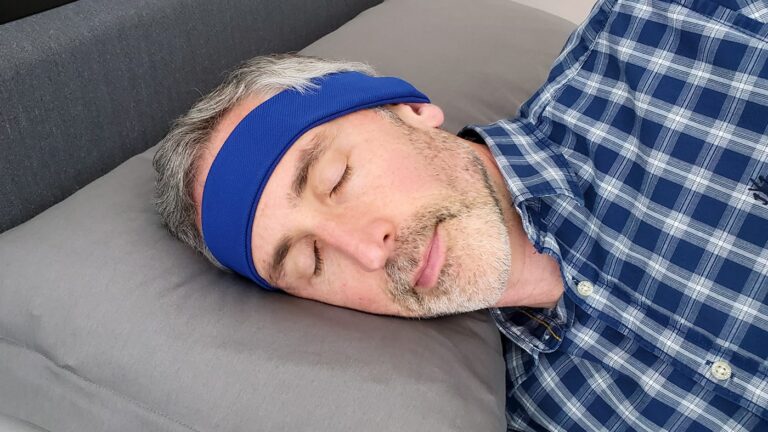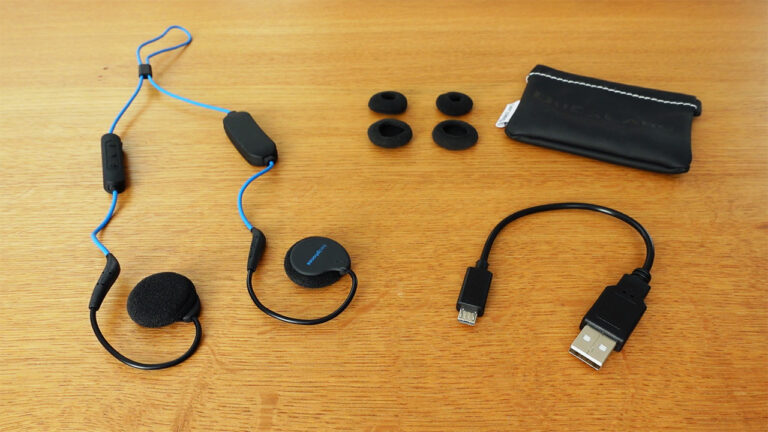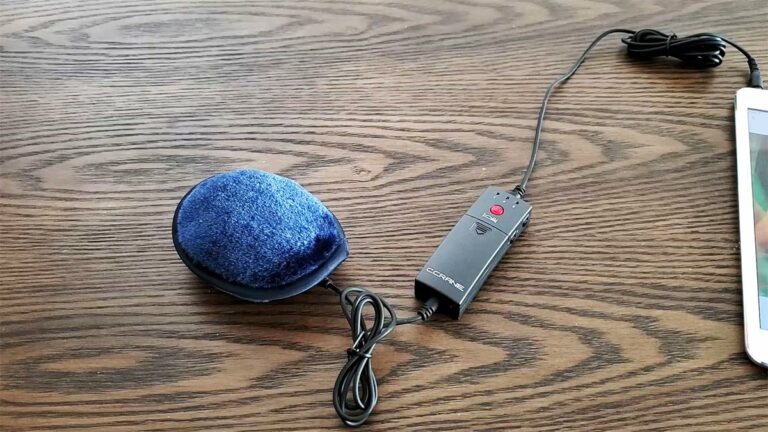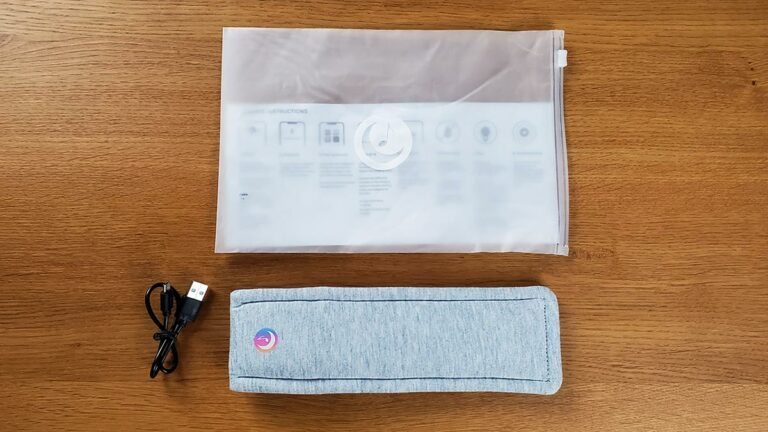Disclosure: My website is reader supported. If you decide to buy something after clicking a link, I may earn a commission, at no extra cost to you. Learn more.
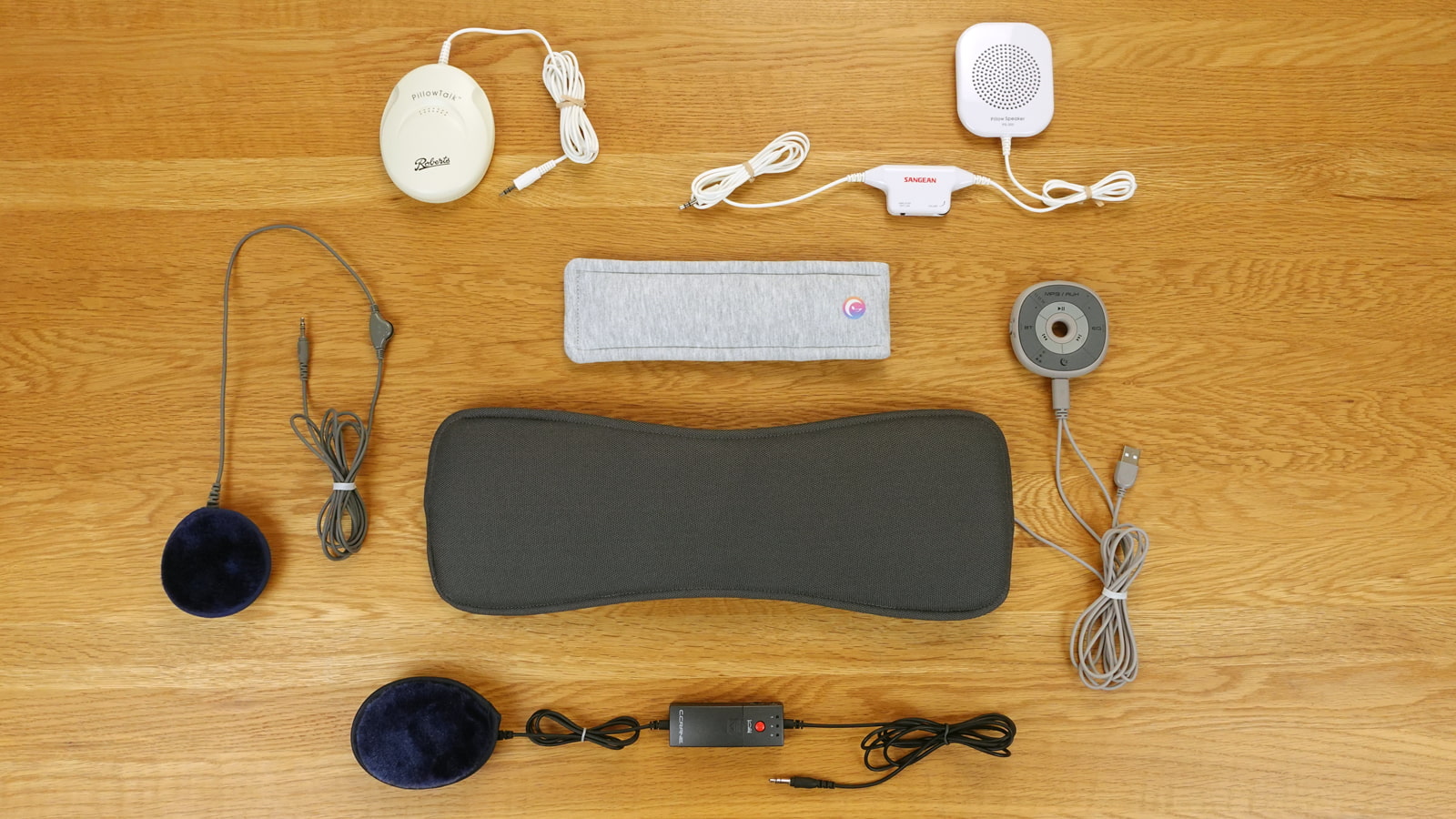
In the photo above, you can compare the size and design of the six pillow speakers I’ll be covering in this article, all of which I bought and have used in the last few years.
Top to bottom, left to right: Roberts, Sangean PS-300, Drowsie, C.Crane Softspeaker 3K, Avantree Slumber, C.Crane Soft Speaker 2.
My partner and I have very different preferences when it comes to bedtime audio. I often like silence, but sometimes enjoy listening to a podcast, relaxing music, or ambient sounds.
She, on the other hand, loves falling asleep to the hypnotic chat of her favourite Spanish radio show or a meditation on the Calm app.
Neither of us wants to listen to the other’s choice, which usually means using headphones. Not everyone finds headphones comfortable to wear in bed though, so a pillow speaker is a good alternative.
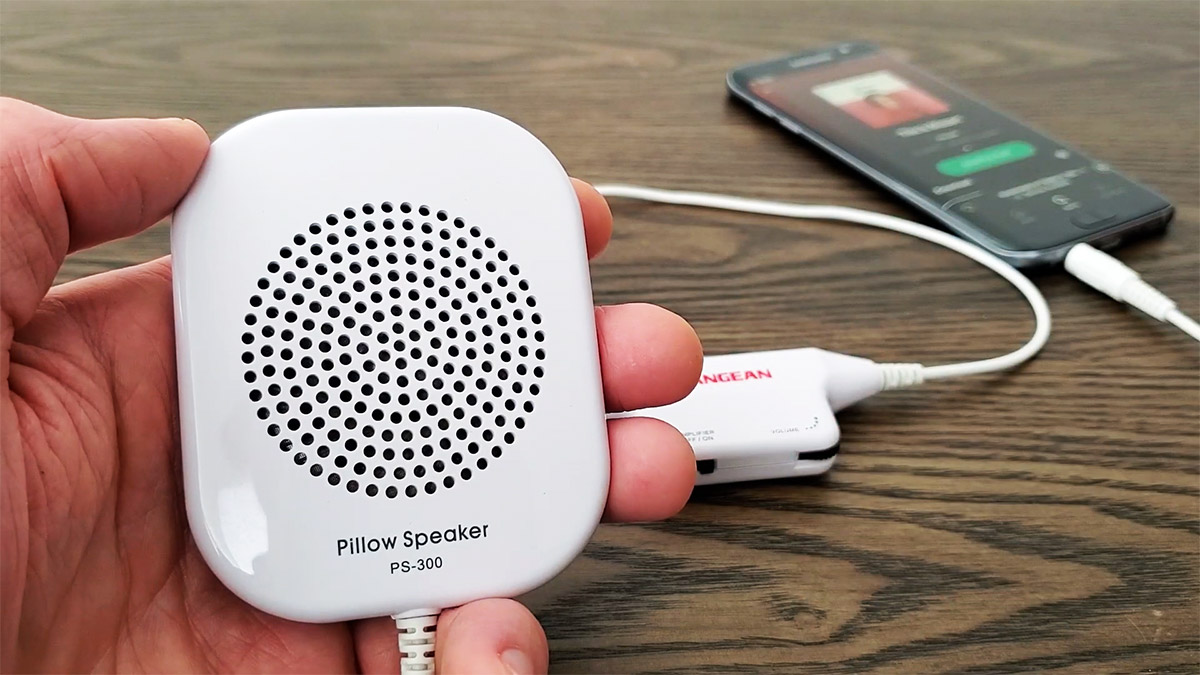
The Sangean in the photo above is best placed under your pillow. The softer ones can be placed right next to your ear though.
I think it’s important to be clear from the outset that pillow speakers won’t blow you away with the audio quality in the same way that high-end headphones might. They are simply a comfortable way to listen to your audio quietly and privately in bed.
I’ve tested a wide range over the years, and will be sharing the best ones I’ve found so far in this article. Please note that all the photos are my own, and the exact pillow speakers I bought. However, the manufacturers may make changes to the design in the future.
1. Drowsie
The best pillow speaker overall if you prefer a wireless connection
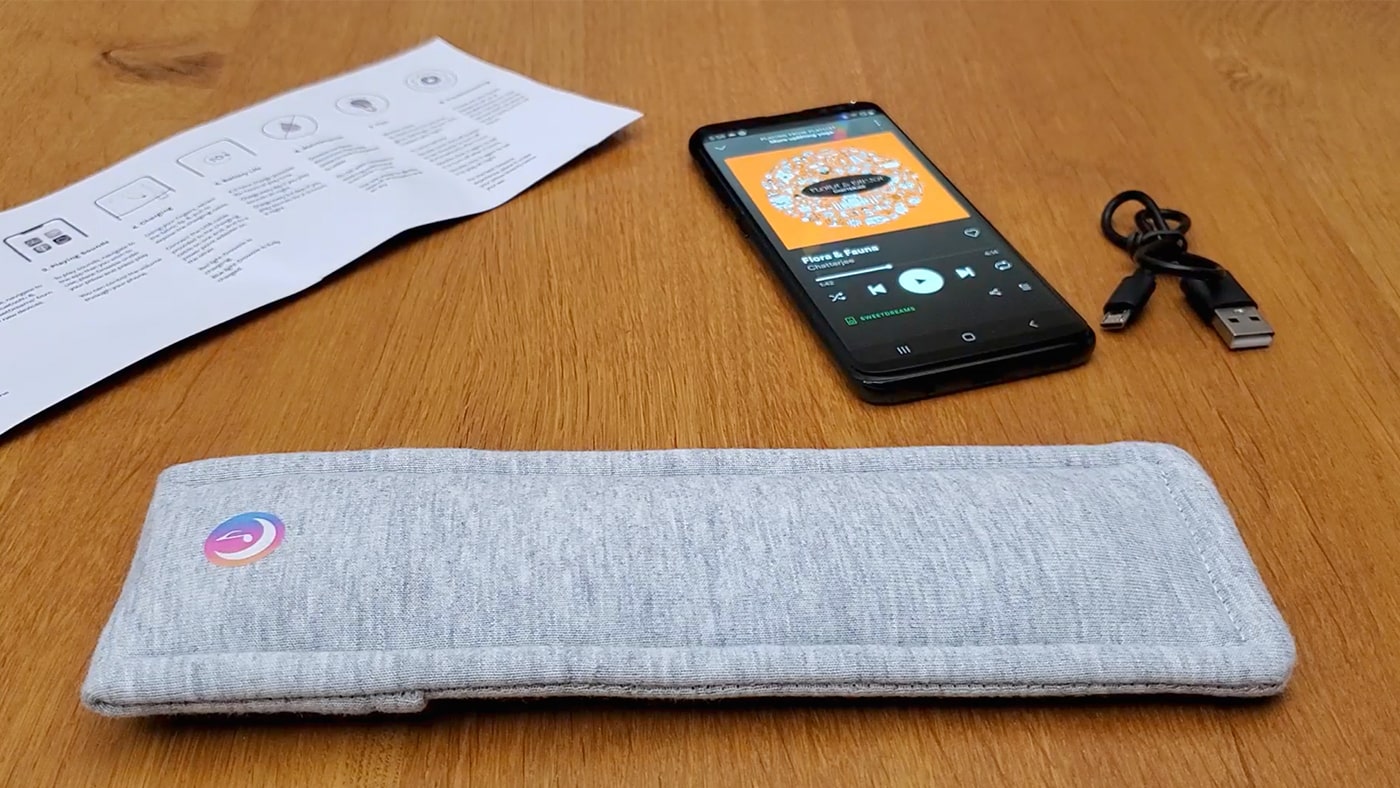
The Drowsie pillow speaker connects via Bluetooth, which avoids the problem of audio devices that can’t connect with a 3.5mm pin. So if you use an Apple device, you won’t need a lightning or USB-C to 3.5mm adaptor.
It takes around two hours to charge, and lasts for up to ten hours, which is long enough for a night or two.
Unlike the other pillow speakers in this article, there are no external cables to tuck under your pillow or dangle into the gap between your bed and nightstand. Whether you feel safer with cables near your head or Bluetooth in the air is a personal decision, but I personally prefer the convenience of Bluetooth.
The pillow speaker itself is a short, padded rectangle shape, with three speakers housed inside. The audio quality is decent (for a pillow speaker) and I can hear both spoken word and music clearly. It worked well on both my Samsung and iPhone when I tested it with Spotify, YouTube, and relaxation apps.
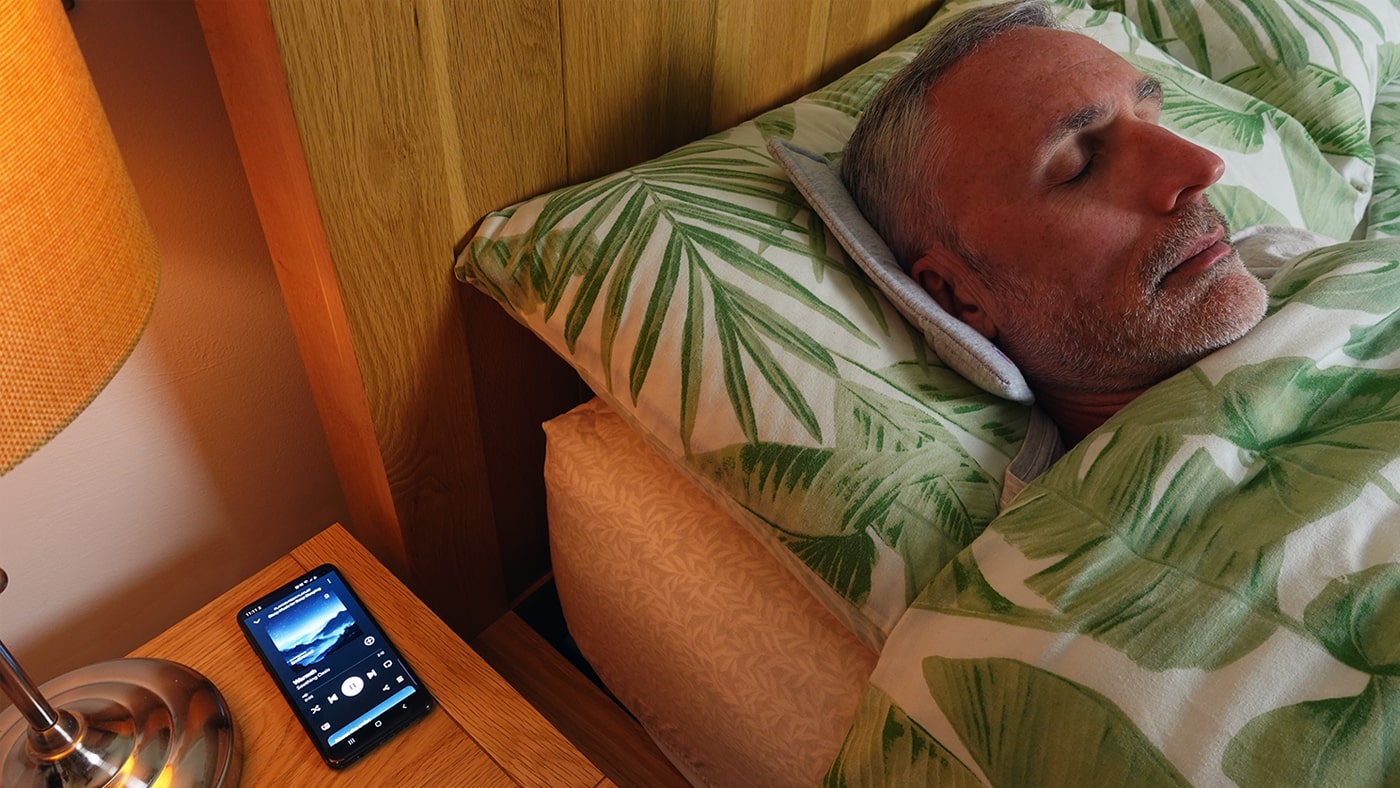
Above, you can see how the Drowsie rests snugly against my ear. I like how soft it feels and the flexibility to place it where you like.
I find the volume is loud enough to hear it if you place it under your pillow, but the soft padding also means you can have it on top of your pillow next to your ear if you prefer. Just keep in mind that spoken word will be muffled through a thick memory foam or latex pillow, but fine through feather or fibrefill.
I also like how it has volume and track change buttons on the speaker, as well as a couple of auto-off timers. The buttons are more fiddly to find than those on the other speakers coming up though.
The main issue is around cleaning. You can’t remove the internal components, so the fabric needs to be spot cleaned, which is a bit inconvenient on the hygiene front. And the need to regularly charge it also adds some friction compared to the wired pillow speakers.
On balance, the Drowsie is comfortable to use and very flexible because of the combination of Bluetooth connectivity, padded speaker, and volume range. The audio quality is good enough for bedtime use, despite lacking some bass, which is an issue all the pillow speakers have.
It currently costs $49.99 in the US and £99 in the UK. Personally, I think the US price is reasonable, but the UK price is too high for what it is.
Find out more and see it in action in my full Drowsie review.
2. Avantree Slumber
Stereo sound, with multiple audio input options and sleep timers
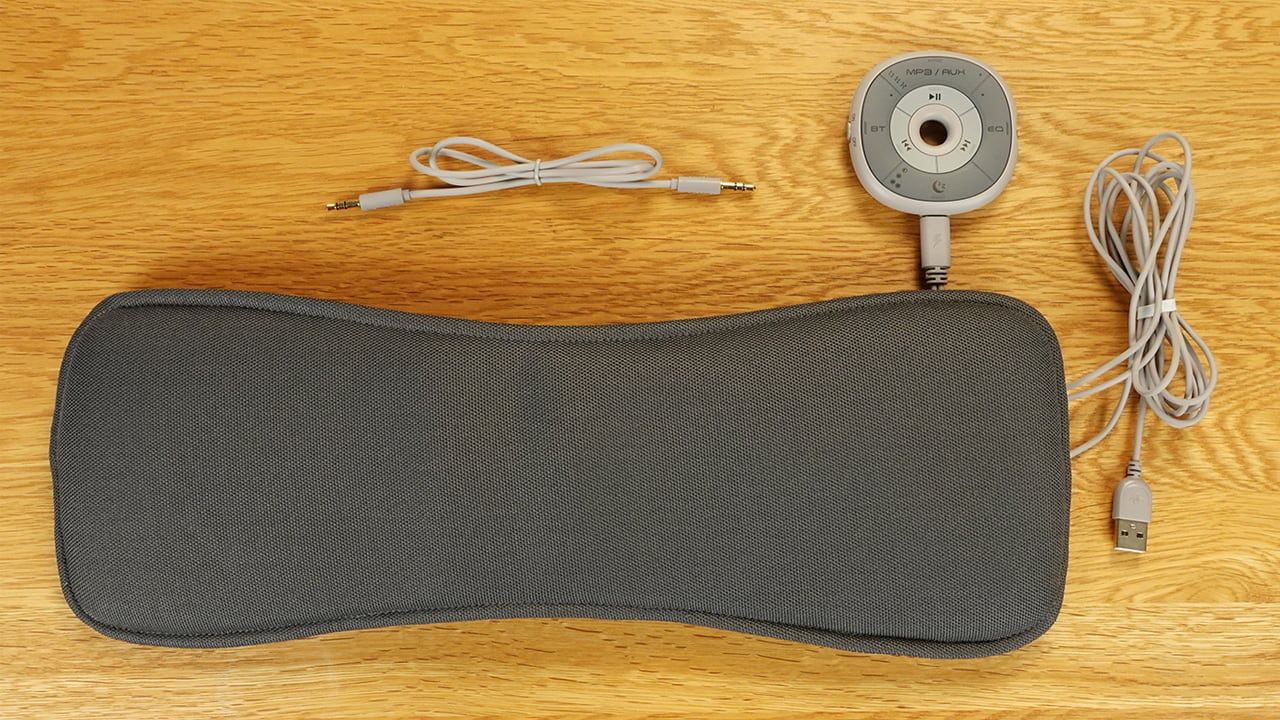
The Avantree Slumber is the latest pillow speaker I’ve tried, and the first one that impressed me with the range of features it offers; pillow speakers tend to be quite simple devices, as you’ll see later in this article.
The fact that there are three audio input options is arguably the main reason to consider it. You can connect via Bluetooth, plug the 3.5mm pin directly into your audio device, or upload your own mp3 tracks onto the 4gb memory card (remember mp3s?).
The next four pillow speakers only have one audio input option each. There are definitely reasons to consider those if their input method works for you. However, I personally prefer the flexibility of the Avantree Slumber.
The section housing the speakers is larger than the others, with a speaker inside each end of the padded strip to provide stereo sound. They say you can rest your head directly over it, or slip it inside your pillow case. However, I found the speaker quality and volume are good enough to place under your pillow and still hear it. Again though, thick memory foam will muffle audio a lot.
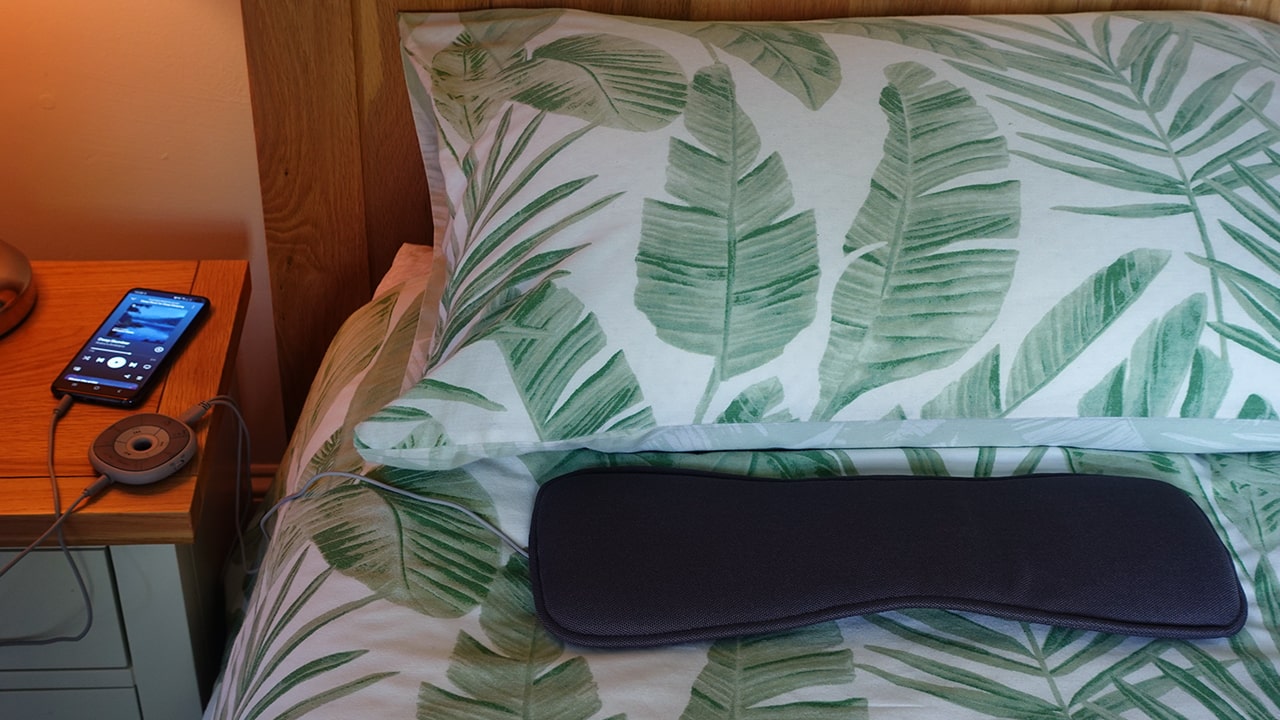
In the photo above, I’ve set the Avantree Slumber up in my bedroom. I found it works well under the pillow, with the control unit sitting on the bedside table.
The Avantree Slumber has a convenient control unit which lets you adjust the volume, EQ (just toggles between music or spoken word), track choice, and auto-off timers. The inclusion of sleep timers is great as you don’t need to faff about with the controls or your own device if you prefer just 15-30 minutes of audio before falling asleep.
It comes with some white noise and nature sounds preloaded onto the memory card. They have some nice rain and music sounds, but there’s a very obvious fade out and restart of the loops after a couple of minutes, so I would upload your own if you enjoy nature sounds.
The main downside is the amount of cables involved. You need to plug it into a USB-C outlet to work, with another cable connecting the control to the pillow speaker. And if you use it wired rather than via Bluetooth, that’s a third cable in the mix. This is the main reason I rate the Drowsie higher, but the Avantree at least never needs charging, which is a plus for a Bluetooth device.
On balance, despite the fiddly cables and slightly confusing buttons at first, the Avantree Slumber is a good choice and works well for quiet, comfortable, and private bedtime listening.
At the time of writing it costs $59.99 in the US, $69.99 in Canada, and £49.99 in the UK. Like the Drowsie, the price is comparatively high for a pillow speaker, but there are some lower costs options coming up next.
3. C. Crane Soft Speaker 3k
The best wired pillow speaker if you’d like audio next to your ear
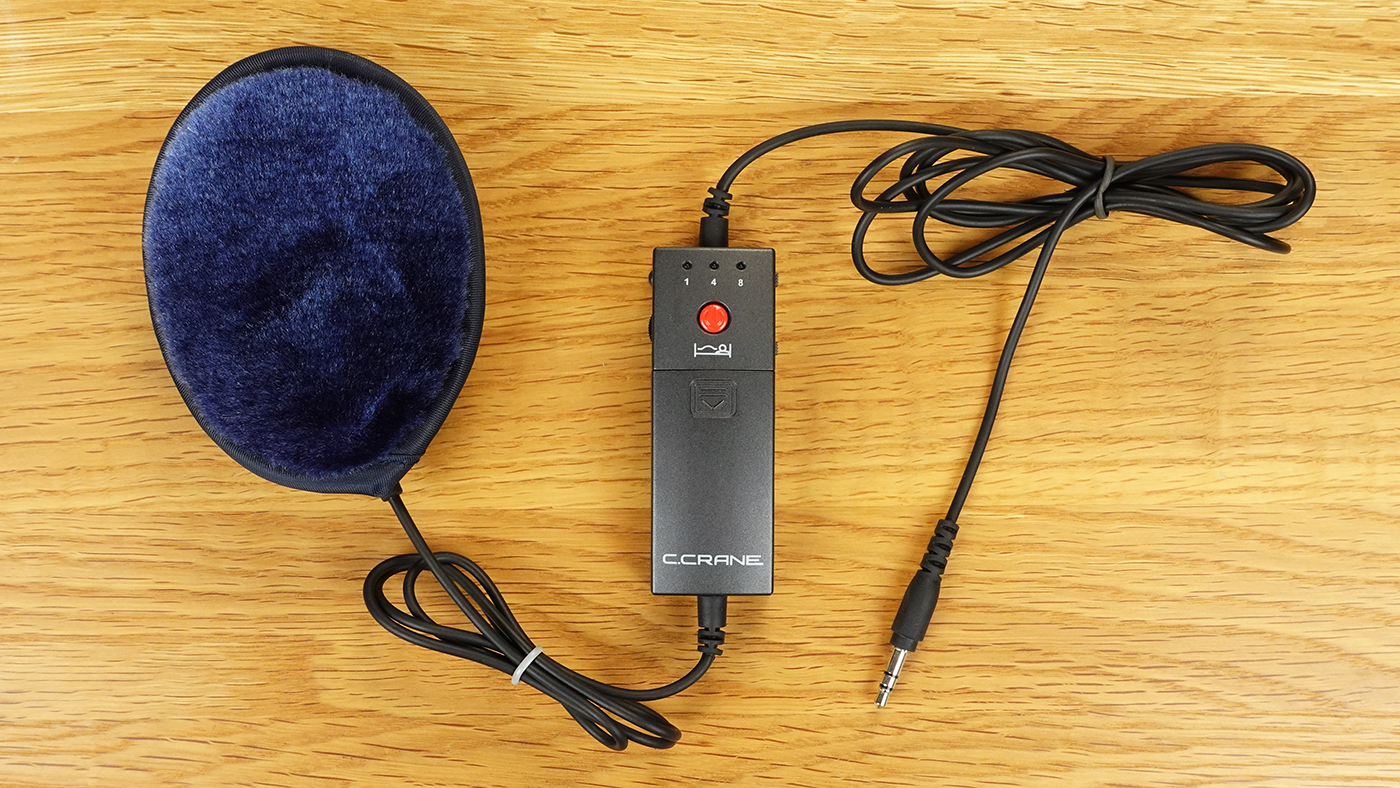
The C. Crane Soft Speaker 3 is a good choice if you prefer to have your audio close to one ear rather than tucking it away under your pillow.
I like that it has a removable soft casing for the speaker to hide inside, which is much easier to clean than the Drowsie. It also means you don’t have to bury the speaker under your pillow as you do with some others; you can place it under or next to your ear, which is great if you have a thick pillow or hearing difficulties.
The audio quality is surprisingly good for such a little pillow speaker. Like the others, it does lack bass, but I found spoken word is crisp and clear, making it a good choice for those who enjoy falling asleep to podcasts, radio, or guided meditations.
It works well with both Spotify and YouTube on my Samsung, unlike the Sangean and Roberts speakers (see below), which were bizarrely quiet with YouTube. And with a lightning adaptor, it works fine with my iPhone too.
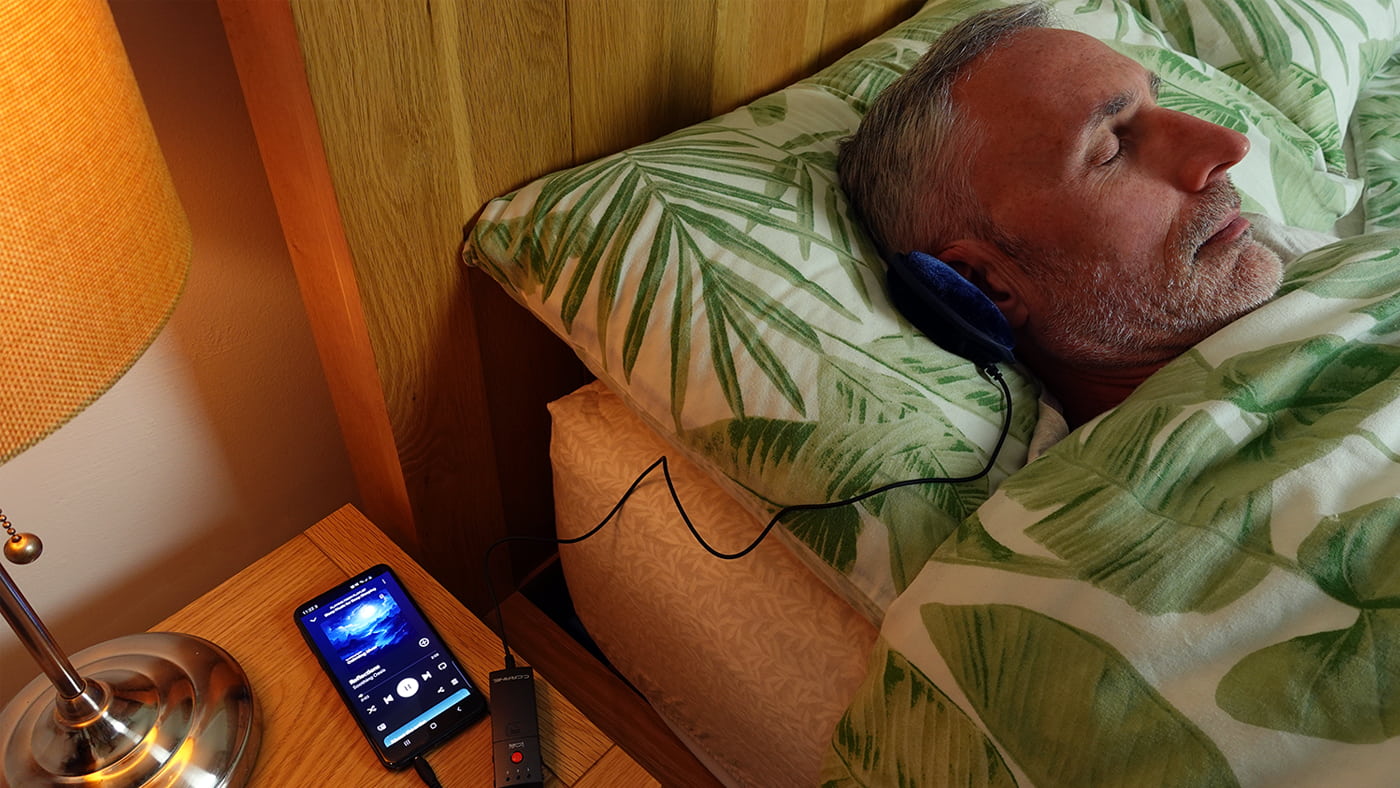
Above, I’m using the C. Crane Soft Speaker 3 in bed with the speaker next to my ear. This one is the softest of all the padded pillow speakers, though it’s not quite as flat as the Drowsie. They are both comfortable to rest an ear on though, as well as the Soft Speaker 2 below.
It has a useful control unit built into the very long 78 inch cable. The control unit lets you adjust the volume and select the amplifier feature, which boosts the volume. The amp boost actually makes a big difference, especially with spoken word.
There are also convenient sleep timers of one, four or eight hours, which is great for saving the battery or if you just want audio for a while. And you can switch between voice or music modes, depending on what you’re listening to.
My main criticism is that you need two AAA batteries if you want to use the amplifier. You can ignore that though, and just play it on normal volumes without the batteries, but it will sound significantly quieter. It’s also lumpier than the others, so if you put it under your pillow, you’re more likely to feel it.
It currently costs $29.99 in the US, and $65 in Canada, but it isn’t available in the UK.
Find out more in my C.Crane pillow speaker review.
4. Sangean Pillow Speaker PS-300
A flat under-pillow speaker with a useful in-line volume control
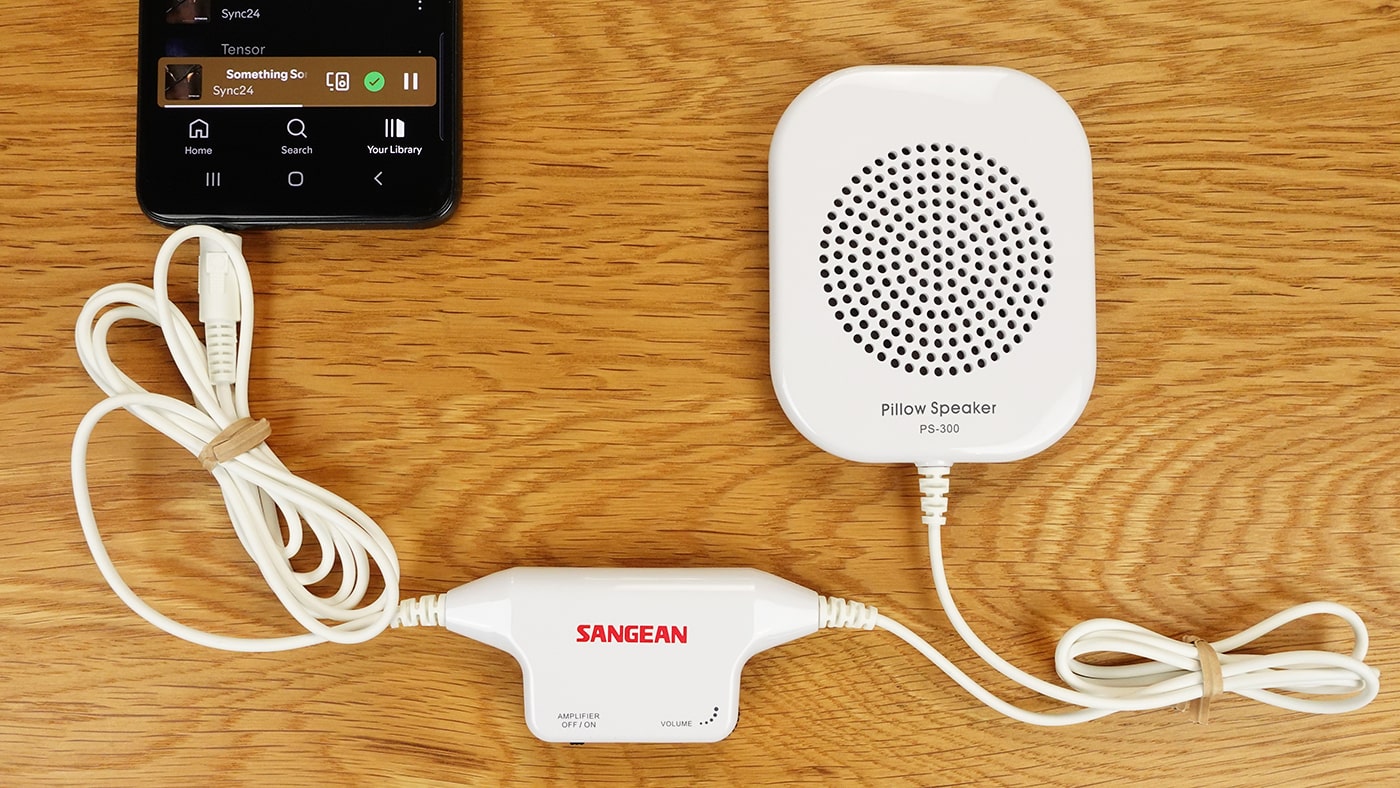
The Sangean PS-300 is a versatile and easy to use little pillow speaker. It has one relatively flat speaker, along with a convenient in-line volume control and amplifier.
It’s not designed to be placed directly under your ear as there’s no padding or material casing. So the options are to place it under your pillow, inside your pillowcase, or somewhere close to your ear on the pillow or mattress.
The speaker has the flattest profile compared to the other five, which makes it a good option to place under thinner pillows as you won’t feel it quite as much if you roll directly over it.
I can hear both speech and music on Spotify and apps easily when I position it under a thin or medium thickness pillow. But if you have a dense pillow and/or struggle with your hearing, then you might find you need to put the speaker on top of your pillow instead.
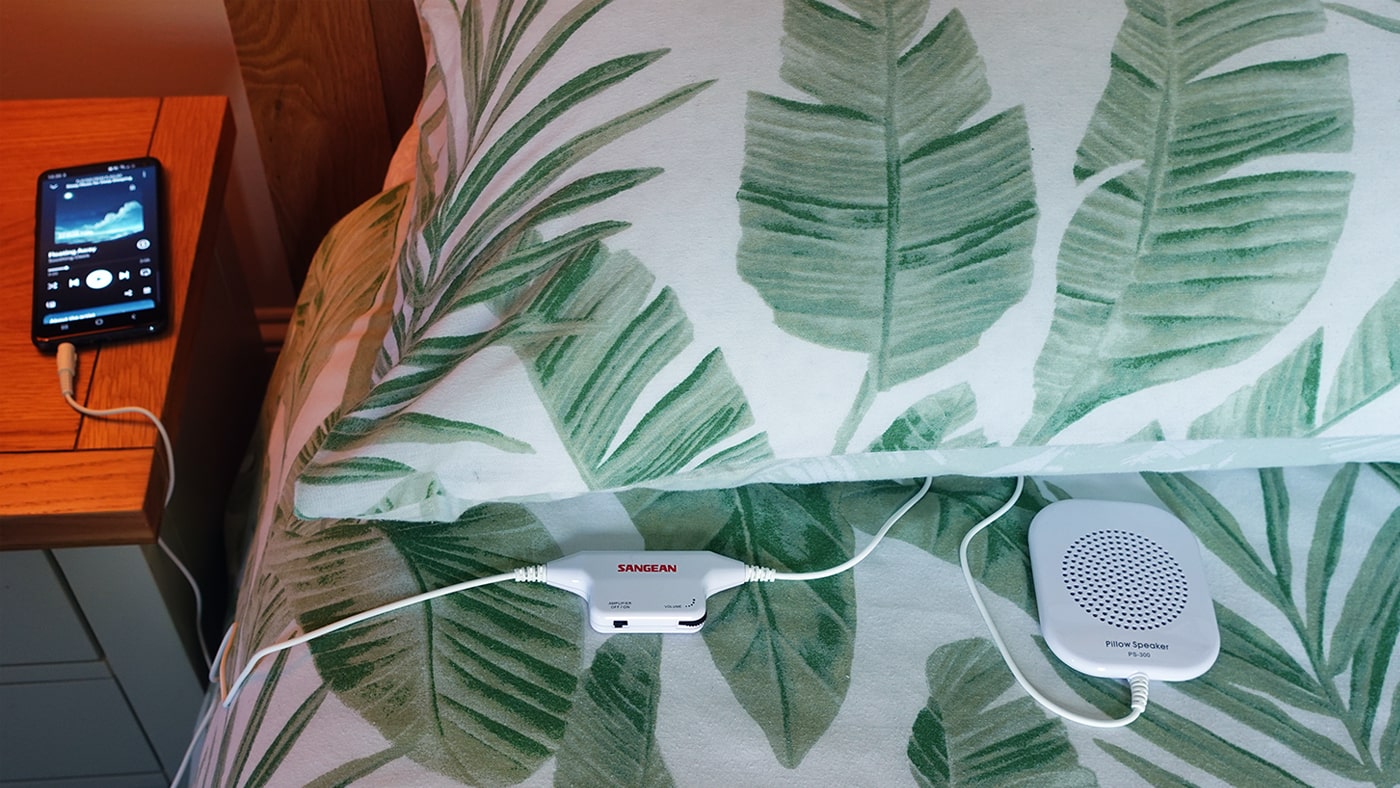
Above, you can see how small the Sangean pillow speaker is. Even though you can place it next to your ear, the lack of padding means it’s better under the pillow in my experience.
Like the C.Crane Soft Speaker 3k, you can use the amp to boost the volume. It needs one AAA battery to work, but you can use it without the amplifier if you want to. I found the boosted volume is particularly useful for podcasts, radio, and audiobooks.
However, if you listen to music that has a lot of bass, the sound distorts if you turn the amp on and the volume right up. That said, it’s still a good option if you listen to spoken word or relaxing music. Another issue is that for some reason YouTube sounds very quiet. Even with the amp boost, I couldn’t hear it easily, so I wouldn’t recommend it if you get your bedtime audio through video.
The cable is 47 inches long, which should be more than long enough to reach a nightstand, even if it’s far from the bed. However, the only way to connect it to your audio device is with the 3.5mm pin, which not all devices are compatible with unless you use an adaptor.
Overall, I’d recommend the Sangean for under-pillow placement if you want to connect with a cable rather than Bluetooth, but not for video playback or if you want it close to your ear (unless you make your own cushioned pouch).
At just under $30 in the US, $41 in Canada, and £25 in the UK at the time of writing, I think the price is fairly reasonable for a pillow speaker.
See it in action in my full Sangean pillow speaker review.
5. C.Crane Soft Speaker 2
A simpler version of the Soft Speaker with a basic in-line volume slider
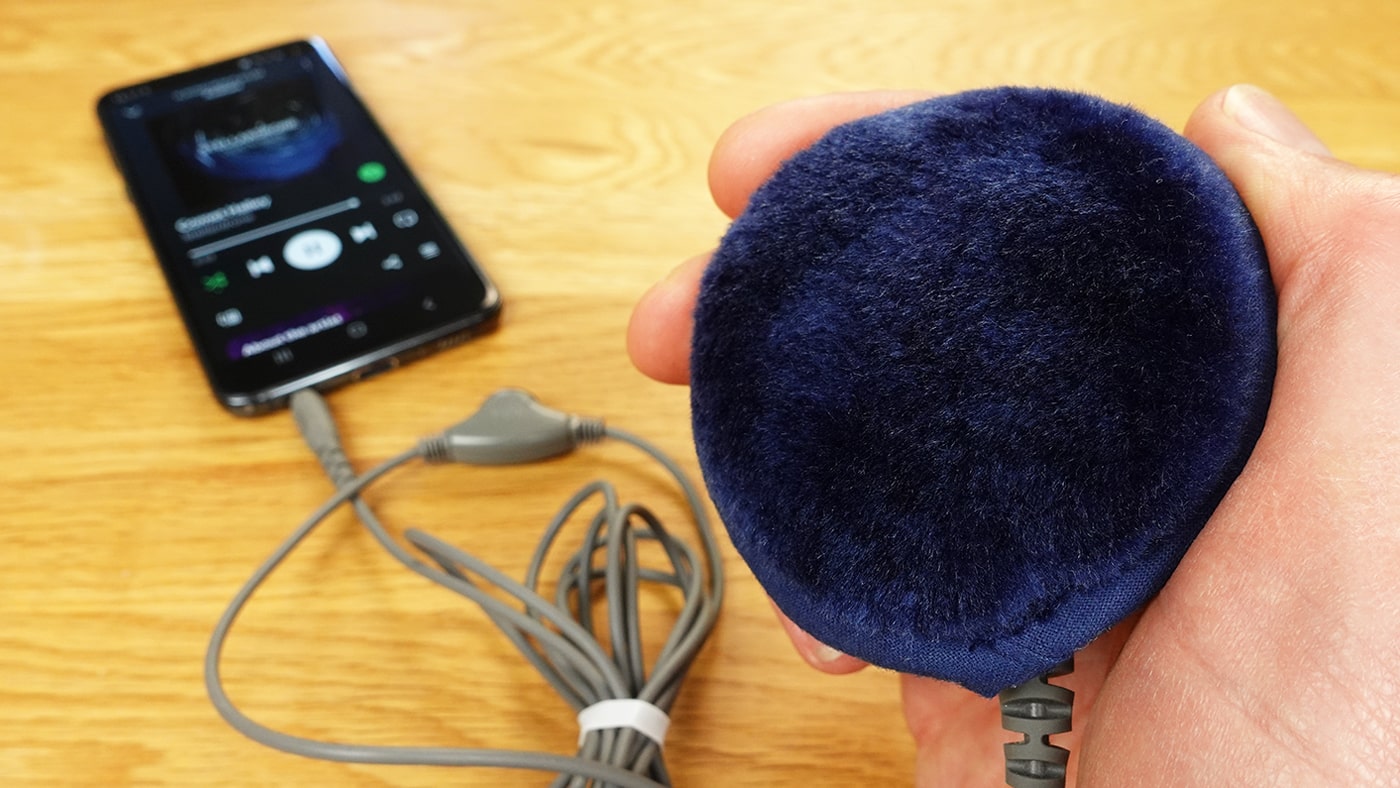
The C.Crane Soft Speaker 2 was one I got a lot of use out of when I had an ear infection and couldn’t use headphones for a couple of weeks. I also liked it for its simplicity, though I definitely prefer the improved version 3 now.
The first key difference between those two is that the casing is smaller, so there’s a little less padding between the speaker and your ear if you rest on it. Secondly, there’s no amplifier control box, so it’s missing the extra features that the version 3 has.
What it does have is a very simple and easy to use design. So it’s perhaps better if you just want to plug your pillow speaker into your audio device (3.5mm pin again) and never have to worry about batteries or finding the right button on the control unit.
The only in-line control is the volume slider dial on the cable. I found I can very easily change the volume in the night without trying to locate the right buttons for the volume. Just slide your hand along the cable, find the dial and turn it as needed.
I don’t think it’s ideal for thick memory foam or latex pillows because of the lower volume, so it’s best to place it next to your ear and/or lean onto it. If you use a thin or medium sized pillow and your hearing is good, you should be able to pop it under your pillow and hear your audio though.
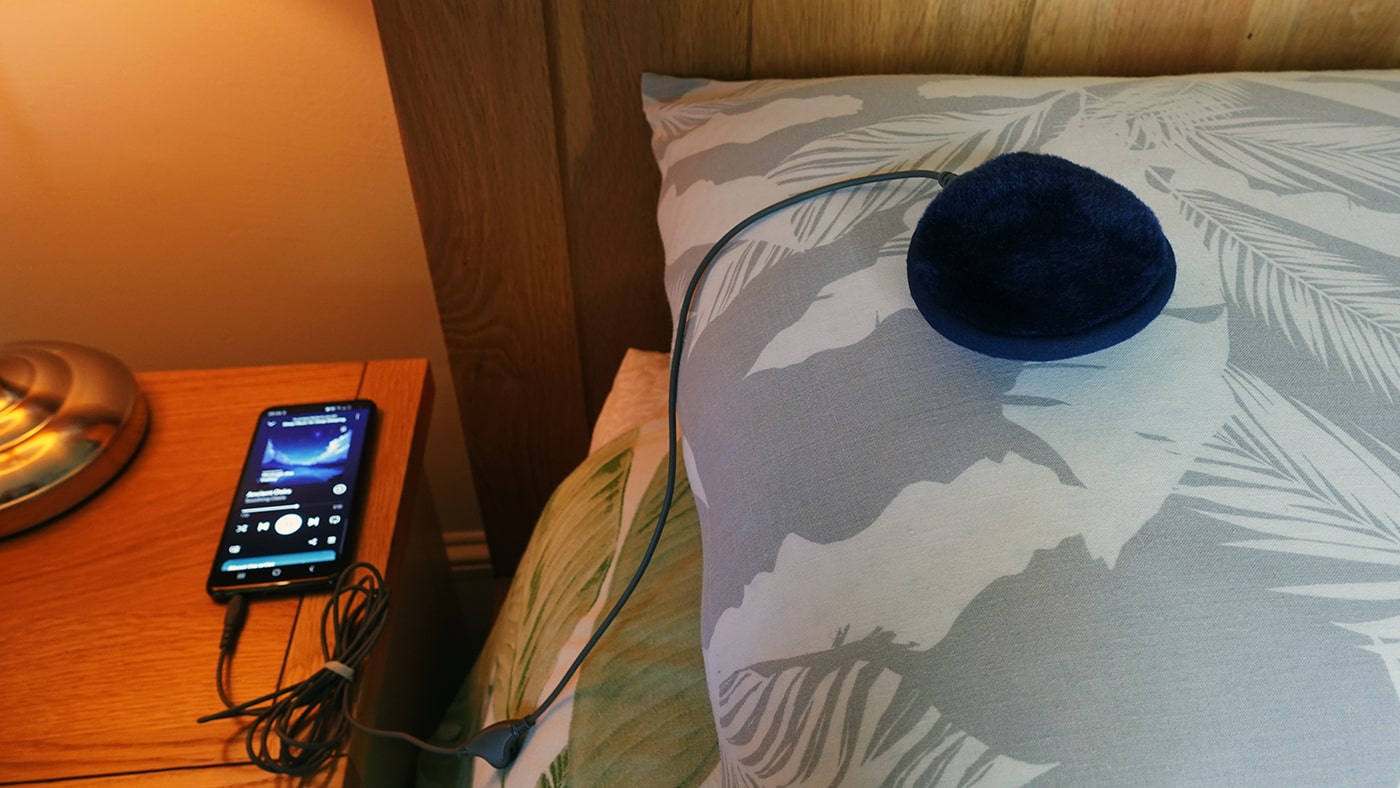
Above, you can see the small slider volume dial halfway along the cable.
The cable is the same length as version 3, at a whopping 78 inches long. This is useful if your audio device is quite far from your pillow. Otherwise, it’s a lot of cable to hang between your bed and nightstand or tie up neatly.
The sound quality is good enough to listen to people talking or soft music. But it’s definitely quieter than the Drowsie, Avantree Slumber, C.Crane version 3, and Sangean.
The price is quite reasonable in the US, at $24.99 on Amazon. For some reason, the price is similar to the version 3 in Canada, which I think is too much. It’s only available in the UK as an import from the US, and also overpriced in my opinion.
6. Roberts PillowTalk
A simple under pillow speaker with low volume
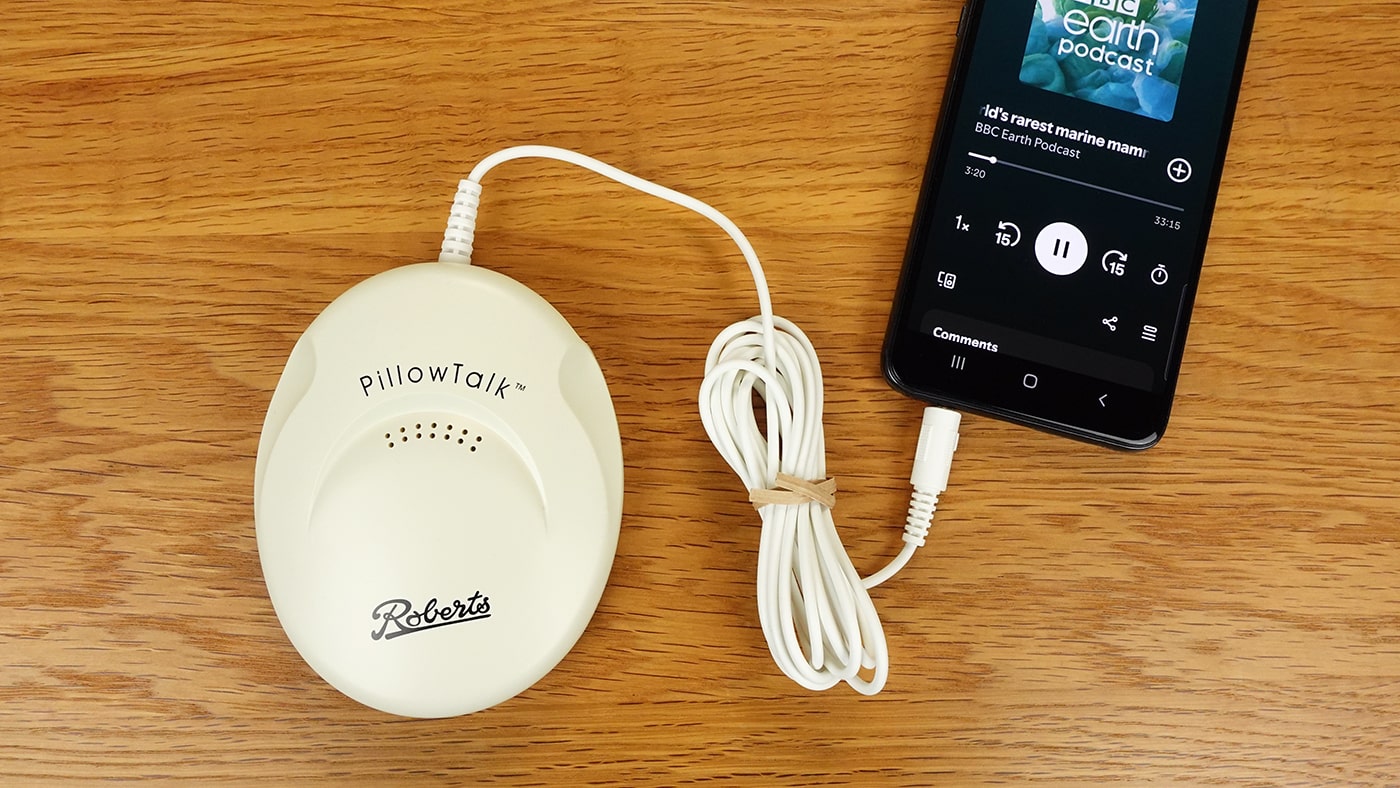
Finally, we come to the Roberts Pillow Talk. I’m not sure when this one was first invented, but on the back it says it’s compatible with ‘any radio, radio cassette, clock radio, CD player, or other equipment fitted with a 3.5mm headphone socket’. So, I’m assuming a long time ago!
Sometimes, I find older tech remains fantastic to this day. Unfortunately, the reality in this case is that it struggled to play as wide a range of audio as effectively as the other pillow speakers I’ve discussed.
The main issue is with speech. I found it’s very difficult to hear people talking on YouTube. Even with Spotify, I found podcasts were too quiet. The Sangean had a similar issue with YouTube, but was at least okay with Spotify.
Interestingly, the only control on the speaker is a button with A,B,C settings, which you toggle to get the best sound for specific players. While I found it makes some difference, it wasn’t enough to make speech clear. It did help with music though, especially on Spotify or apps.
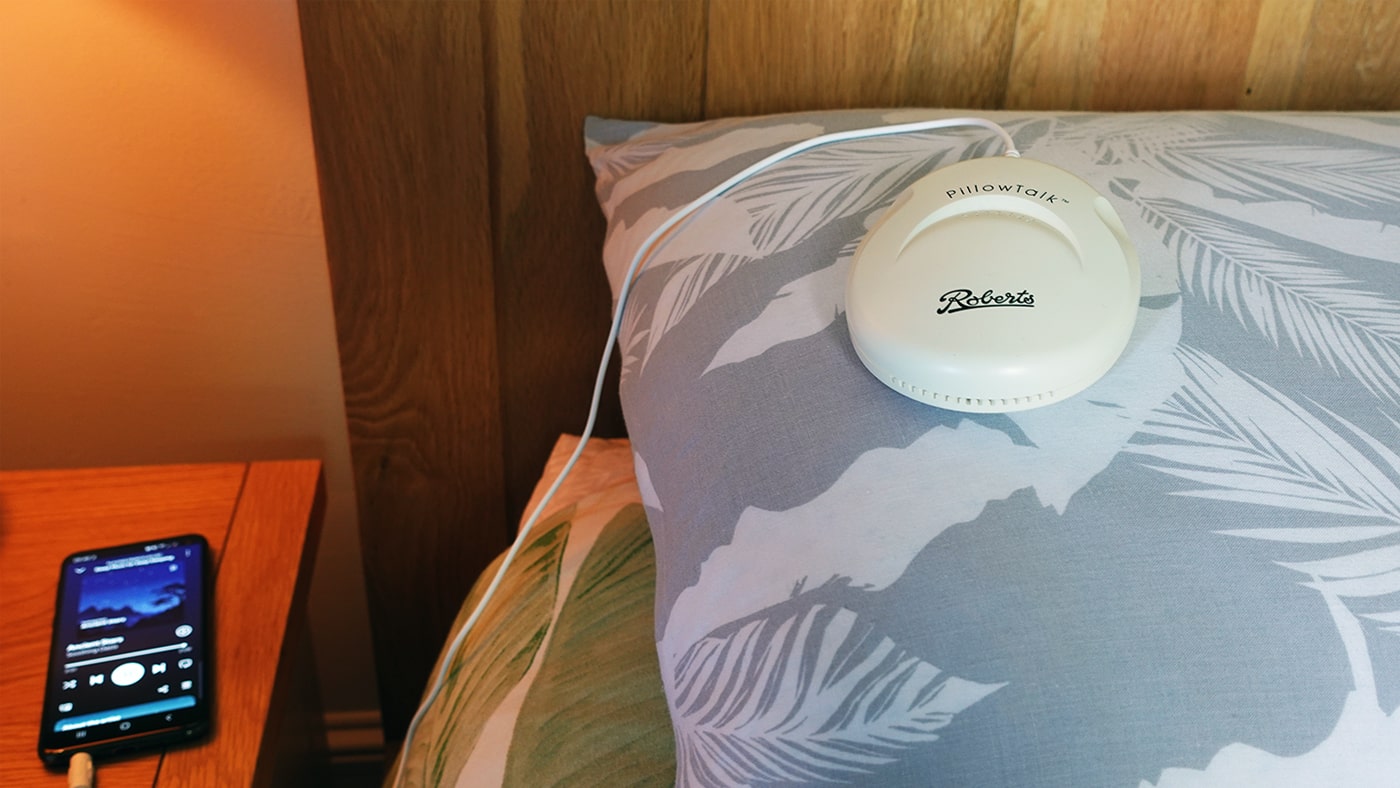
Above, I have the Roberts Pillow Talk on top of my pillow for the photo, but I would only use it under the pillow really.
When it comes to placement options, the lack of a soft casing means it’s best to place it under your pillow, or slightly away from your ear. However, the lower volume means you’d need a relatively lightweight pillow to hear it clearly. And even with my good hearing, I couldn’t hear podcasts through a thin fibrefill pillow. Music was audible, but not people talking.
The connection is with a 3.5mm pin, so again you’d need an adaptor if you use Apple devices.
Overall, the Roberts was my least favourite of the pillow speakers. However, considering how few of these devices are even available, especially if you live in the UK, it might be one to try if you only need some quiet music or specifically want one with low volume output.
It’s currently only sold in the UK, where it typically costs £14.99 on Amazon.

